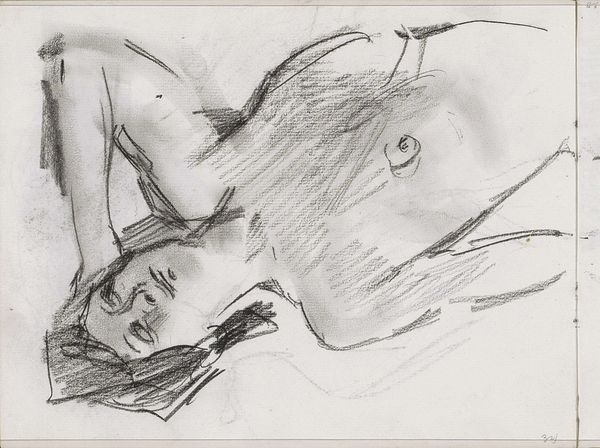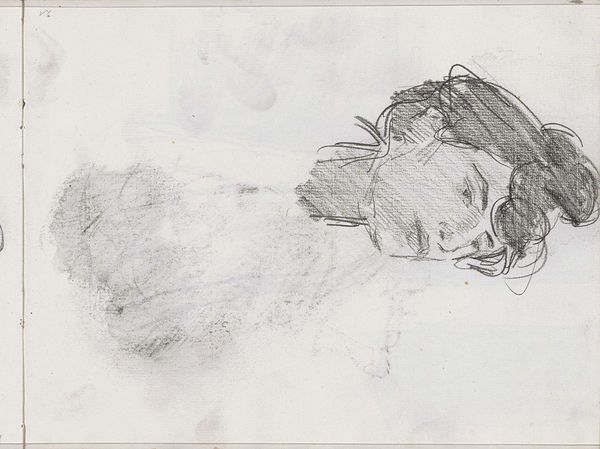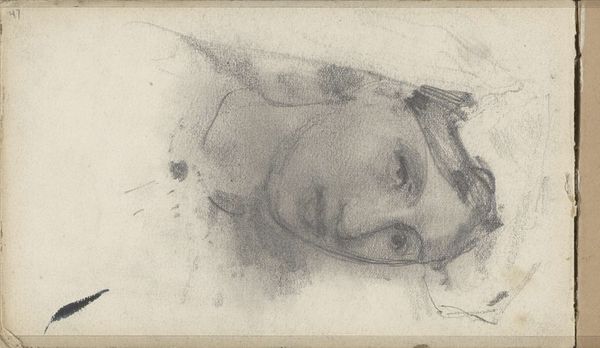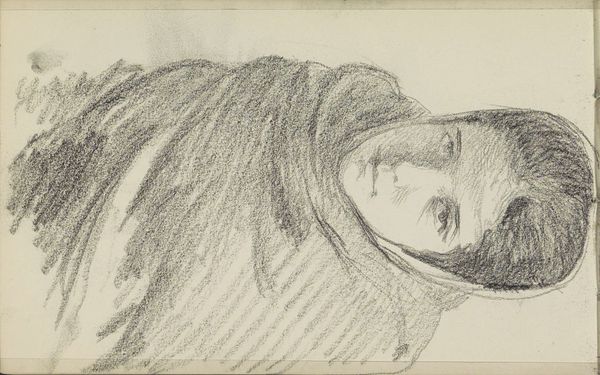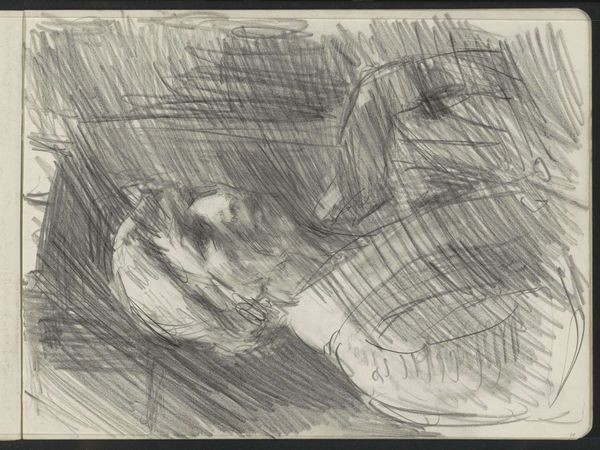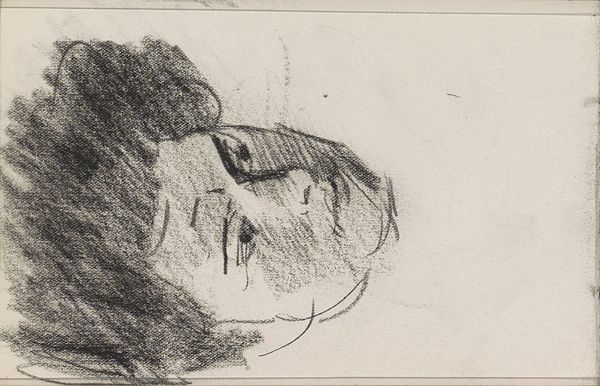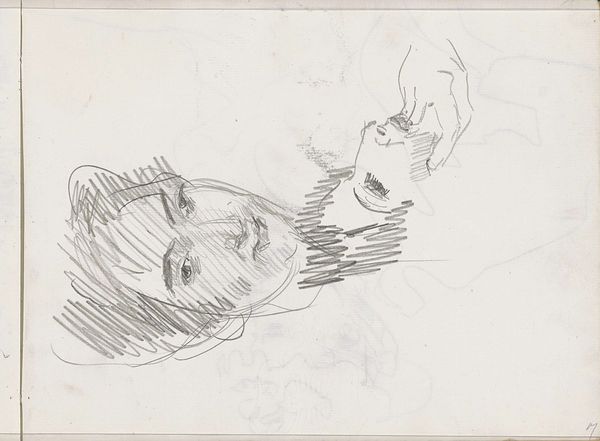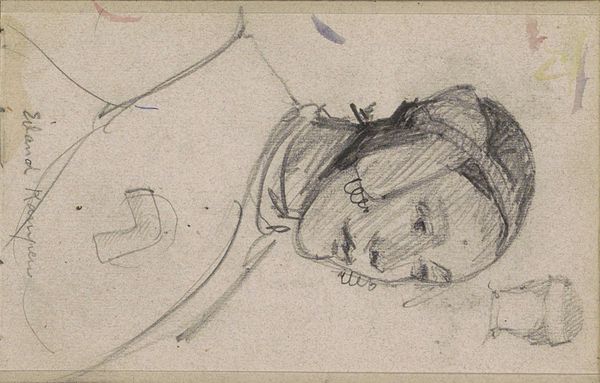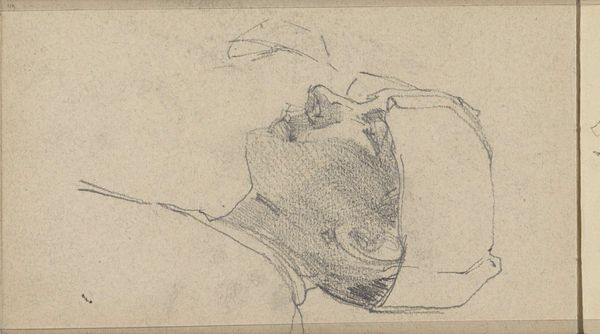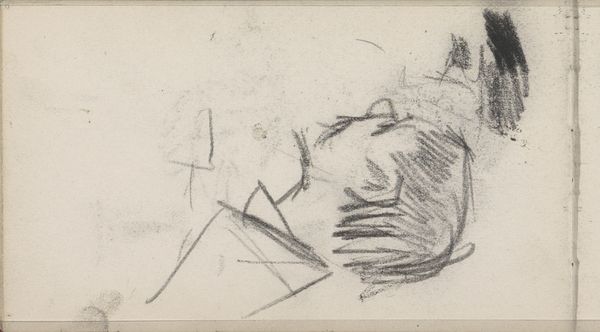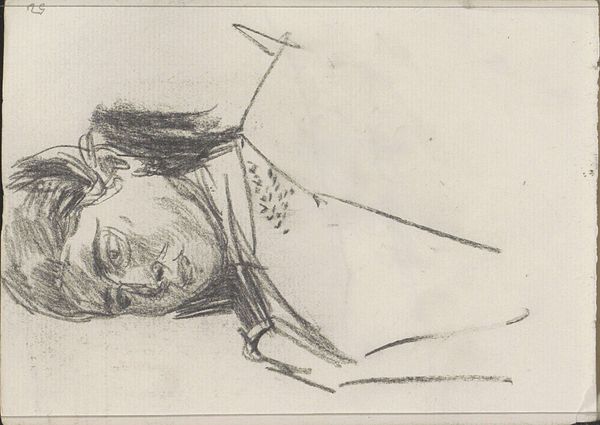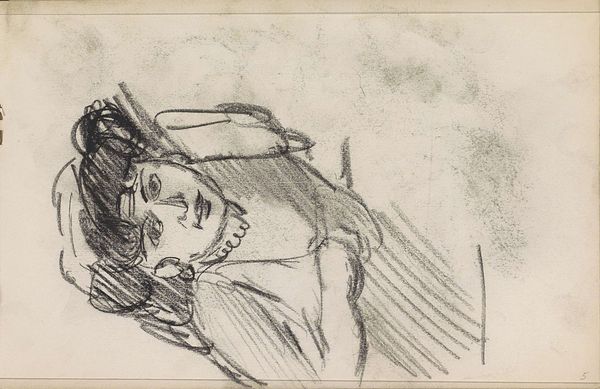
Copyright: Rijks Museum: Open Domain
Editor: This pencil drawing, “Vrouwelijk naakt,” or “Female Nude,” by Isaac Israels, dating from between 1875 and 1934, has a dreamlike quality because it feels unfinished. The reclining figure seems so relaxed, yet almost fades into the background. How would you interpret its visual language? Curator: The fading is key, isn't it? Look how the figure almost emerges from the paper, rendered in a flurry of marks. Consider how the gaze is averted, inward perhaps, in repose, carrying on the legacy of Romantic era painting, as a memory and monument. There is, simultaneously, a presence and an absence—a fleeting moment captured in a lasting medium. Does this tension speak to you? Editor: It does. It's as if the artist is revealing only what is essential. The visible and the invisible become blurred, creating an emotional impact. Do you see any specific cultural symbols within this figuration? Curator: In this specific nude drawing, beyond the general reclining Venus, I see something slightly different. The very act of portraying the nude form has been, for centuries, fraught with meaning. Israels offers a fresh interpretation that strips it down to line and tone; it suggests intimacy and familiarity devoid of overt eroticism. Look at the figure, are the artist's intentions clear? Or does it seem rather personal and raw? Editor: It does seem more like a personal reflection, almost a private study rather than a grand statement. Curator: Precisely. This drawing speaks volumes through its seeming simplicity. Israels captures something elemental about the human form. What is so striking is how, the composition reveals that, by isolating it this way, he preserves the symbol for the next generation to deconstruct. Editor: That's fascinating. I initially saw it as just an impressionistic sketch, but now I see a layered visual language. It holds the essence of art history but also anticipates future artistic investigations. Curator: Exactly, isn't it rewarding how a closer look unveils not only the skill of the artist but also how art always exists in dialogue with the past and the future.
Comments
No comments
Be the first to comment and join the conversation on the ultimate creative platform.
